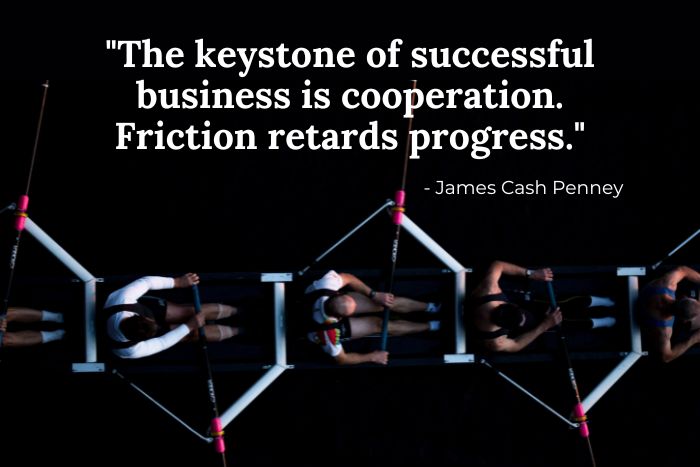Struggle Vs. Flow – Red Flags for Your Business

You’re probably familiar with the statistics on small business failure rates – based on a recent study, about 50% of small businesses (with employees) will fail within the first 5 years. It’s an interesting data point, but I think it’s also misleading. I think the problematic word is failure – it’s not that most of those businesses implode (or explode) suddenly sometime in those first 5 years… it’s much more likely that the owners just became worn down and quietly just fade away over a period of months… or even years.
Successfully running or growing a business takes a lot of work – and that’s when everything is going well. When things aren’t going well, when there’s too much friction, a struggle, it can easily get to the point where it’s overwhelming and just not worth the effort. Which is where a lot of those business ‘failures’ come from.
Struggle Versus Flow
Struggle is a red flag for your business. It’s the friction that can potentially bring things to a halt (or at least heat them up). On the other hand, Flow is a green light – and the the more green lights you have the faster you can go (and the easier it is).
For a business owner, it can be helpful to identify potential areas of Struggle versus Flow. Every business and owner is unique but this might be a good starting point to think about:
| Struggle | Flow |
| Time – Constantly feeling rushed | Feeling like there’s enough time to get the important things done |
| Saying ‘Yes’ to almost everything | Saying ‘No’ to almost everything |
| Complexity – things aren’t obvious or easy for employees or customers | Simplicity – intuitive or streamlined interactions, processes, outcomes |
| Delegating Tasks | Delegating Outcomes |
| Scope of work (things that need to be done) is constantly growing | Scope of work is managed, focused and prioritized |
| Uncomfortably busy with lots of activities | Clear understanding of what moves the needle and only focus on those things |
| Wrong people – don’t share the company’s core values | Right People – they believe what you believe when it comes to work, relationships, etc. |
| Selling more is hard | Lots of demand for what you sell – it’s easy |
| Profits less than 10% | Consistent profit of more than 10% |
| Employees mostly don’t know what you’re trying to do this year | Clear focus and understanding by the team on the 3 most important things to get done this year |
| No idea how well you’re doing – no key metrics or tracking financials… in the dark | Weekly review of key metrics and financials so you always know how well you’re doing |
| No ‘Big Picture’ of where things will be in 5 to 10 years | Clear, exciting vision of what the company is trying to achieve over the next 5 to 10 years |
| Dread going into work most days | Excited about your day and enjoy most of them |
What’s Next?
When you check out the list above – are there certain ideas that resonate with you? Are there certain areas that you would definitely put in the Struggle category? If you’re like most business owners, then there are probably quite a few that aren’t flowing… you can’t start and grow a business without running into a lot of these challenges.
But the real growth of your business comes from changing Struggle into Flow. It doesn’t happen quickly and it certainly doesn’t happen all at once, but it can be done.
Next steps would be to pick one or two areas of struggle that resonate with you – they don’t need to be the biggest issues, maybe pick something that you feel like you can clean up quickly and start there. What’s an area of friction that impacts your team every week? Carve out some time and focus on addressing that first challenge… and once that’s addressed, pick the next one (and so on).
The good news is that a lot of these ideas overlap with each other, so as you address one, you might find that progress has been made in other areas. As an example, making more money (increasing profits) tends to make a lot of other things easier to solve…!
Struggle Versus Flow – what do you think?
Is this kind of model helpful? Are there big areas that we missed? We’d love to hear your thoughts – leave a comment below, or reach out if you’d like to talk through how this might be impacting your business – we’d be glad to get the ball rolling with you.
Shawn Kinkade Kansas City Business Coach
